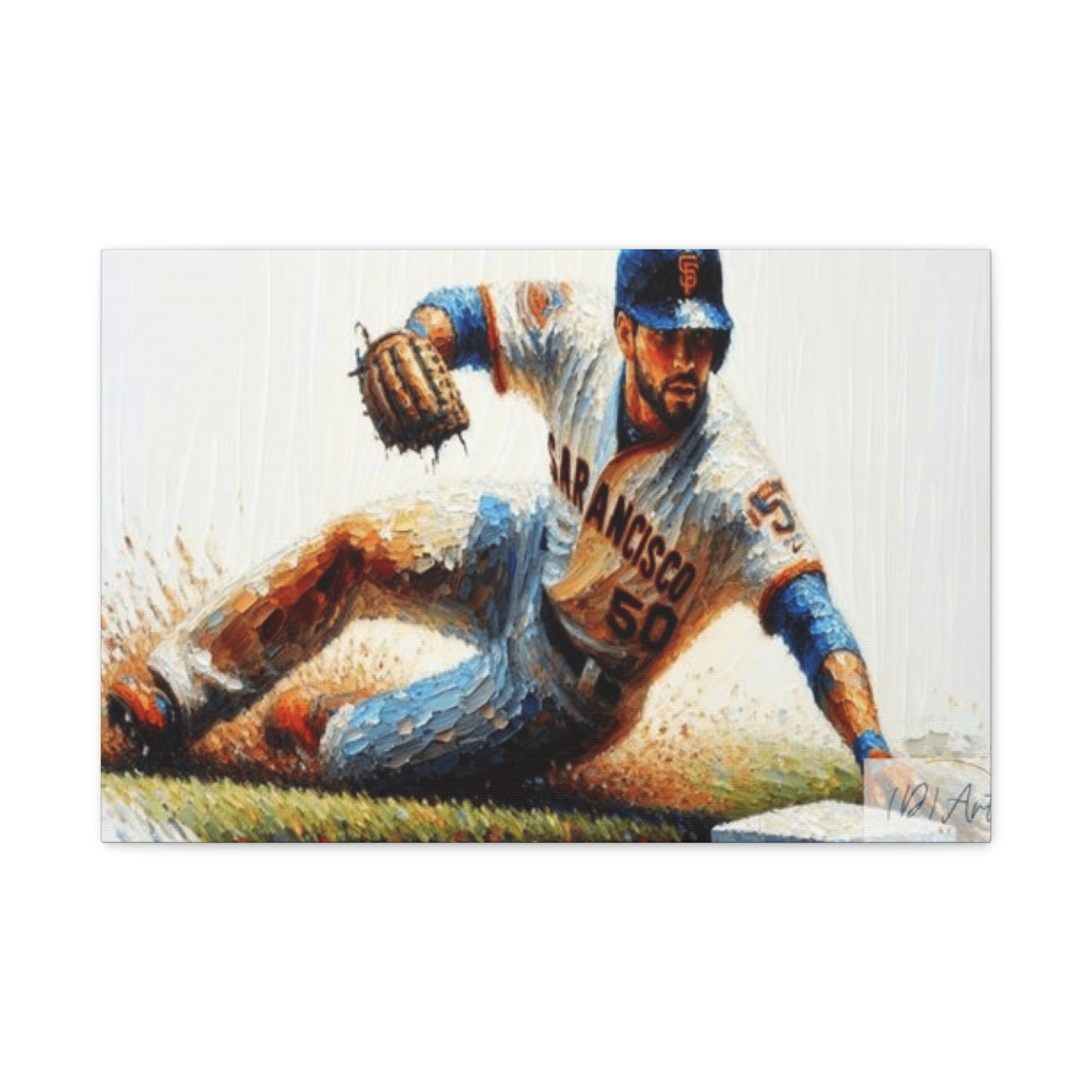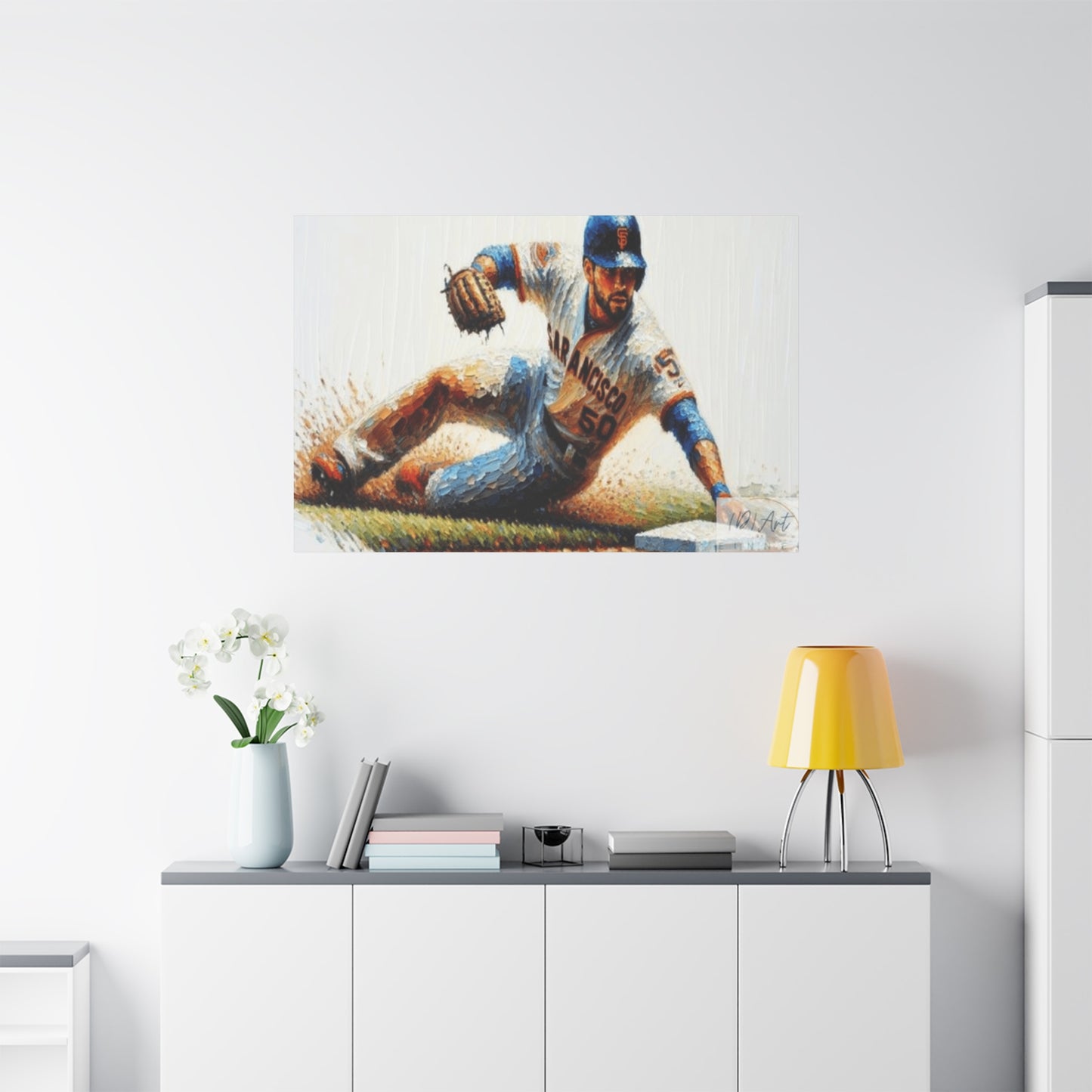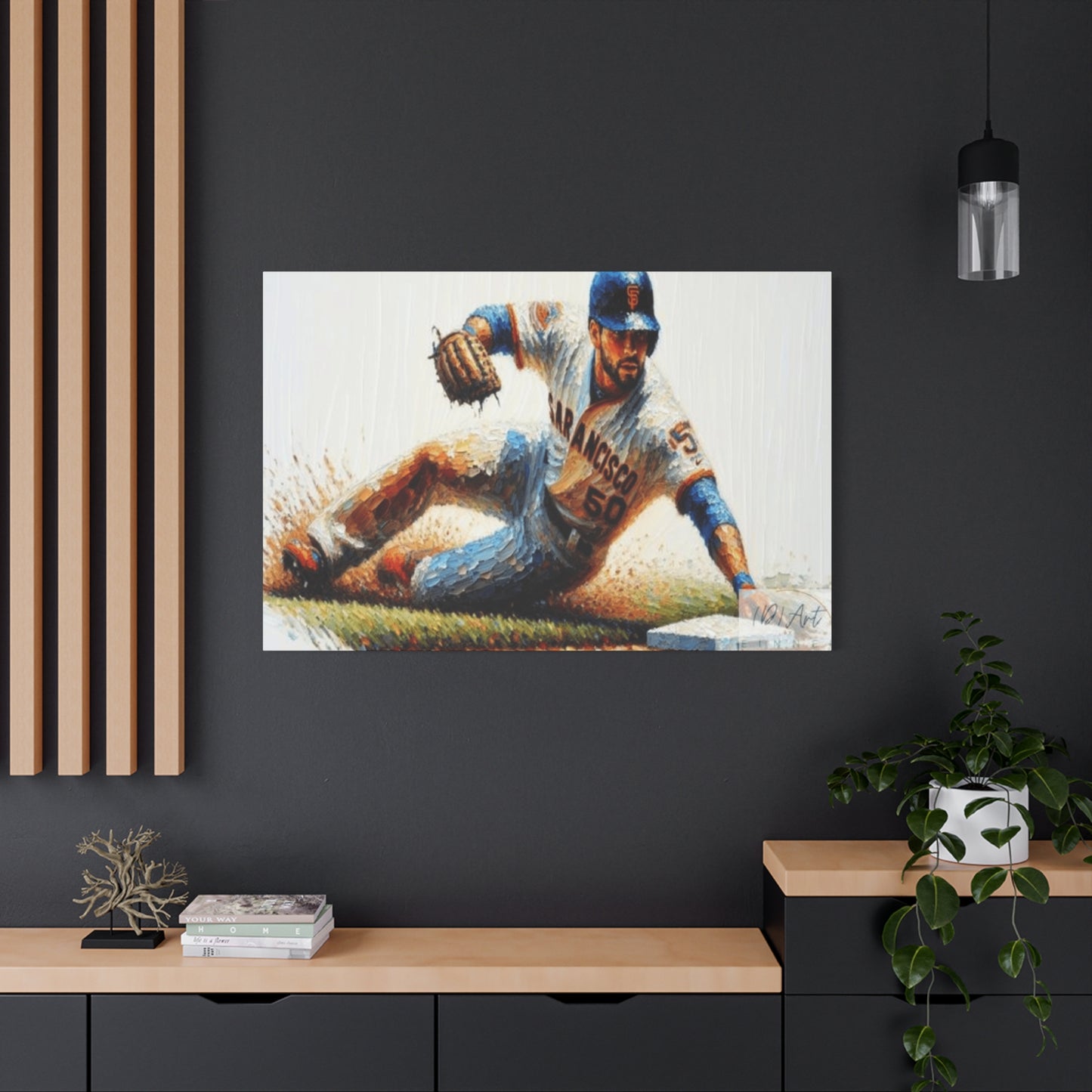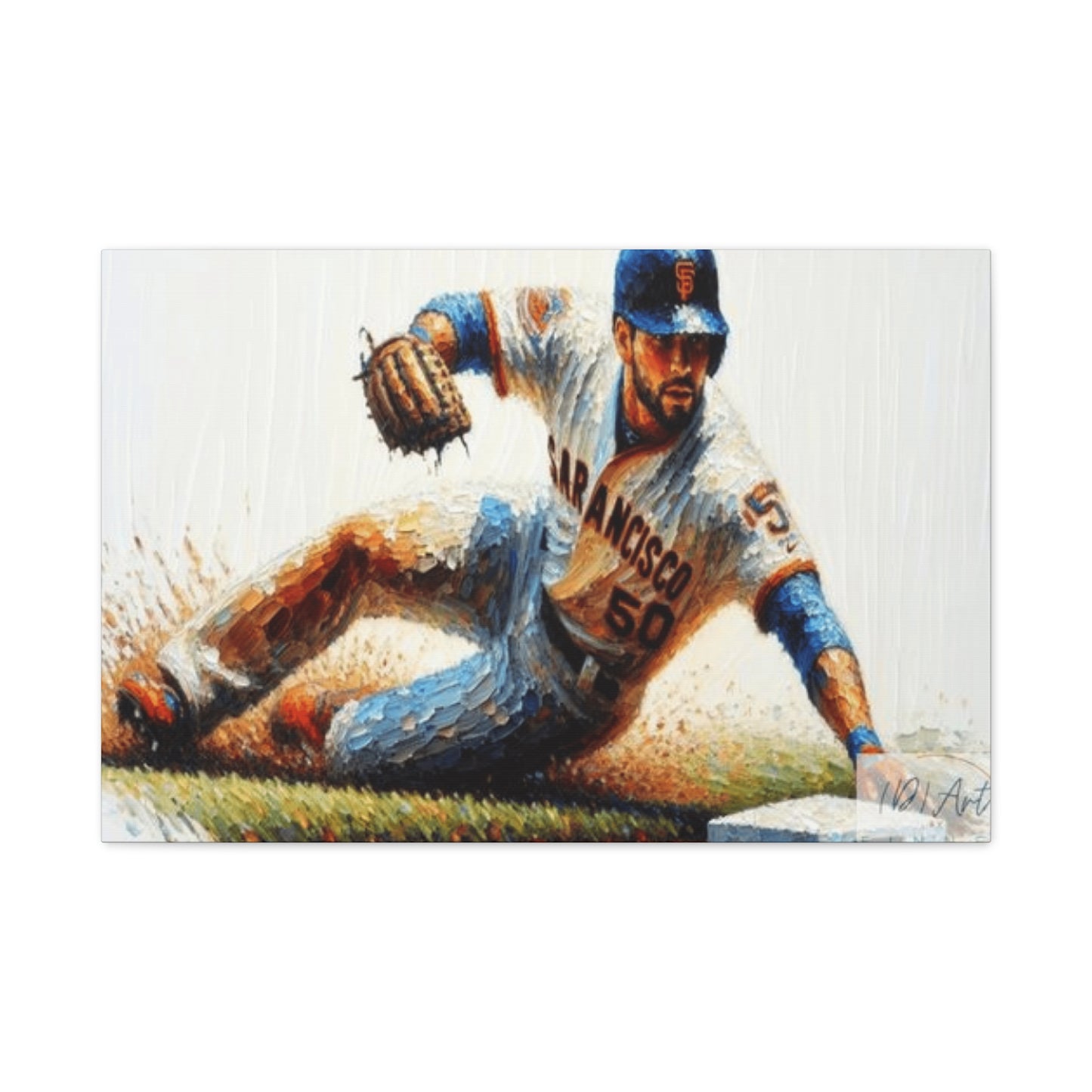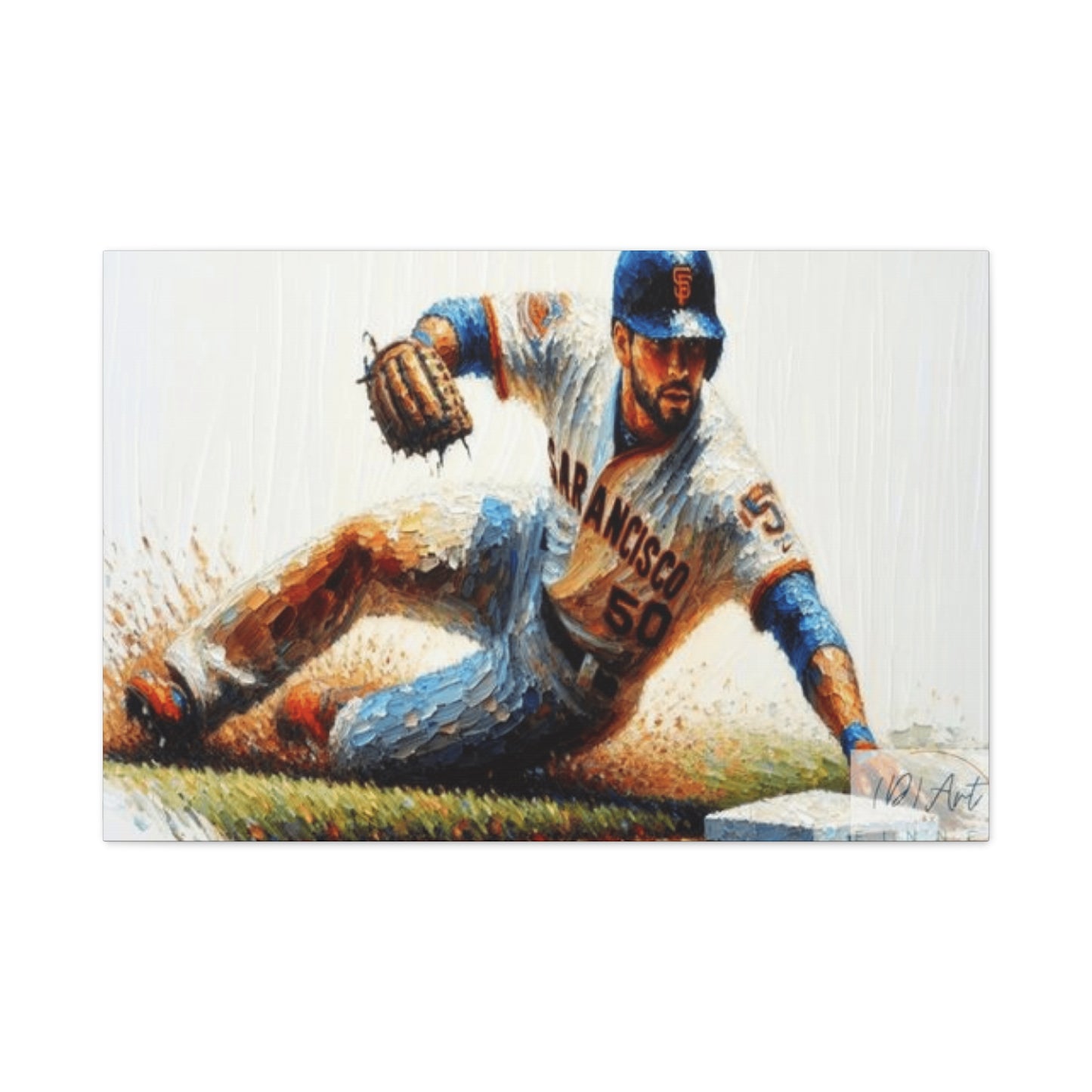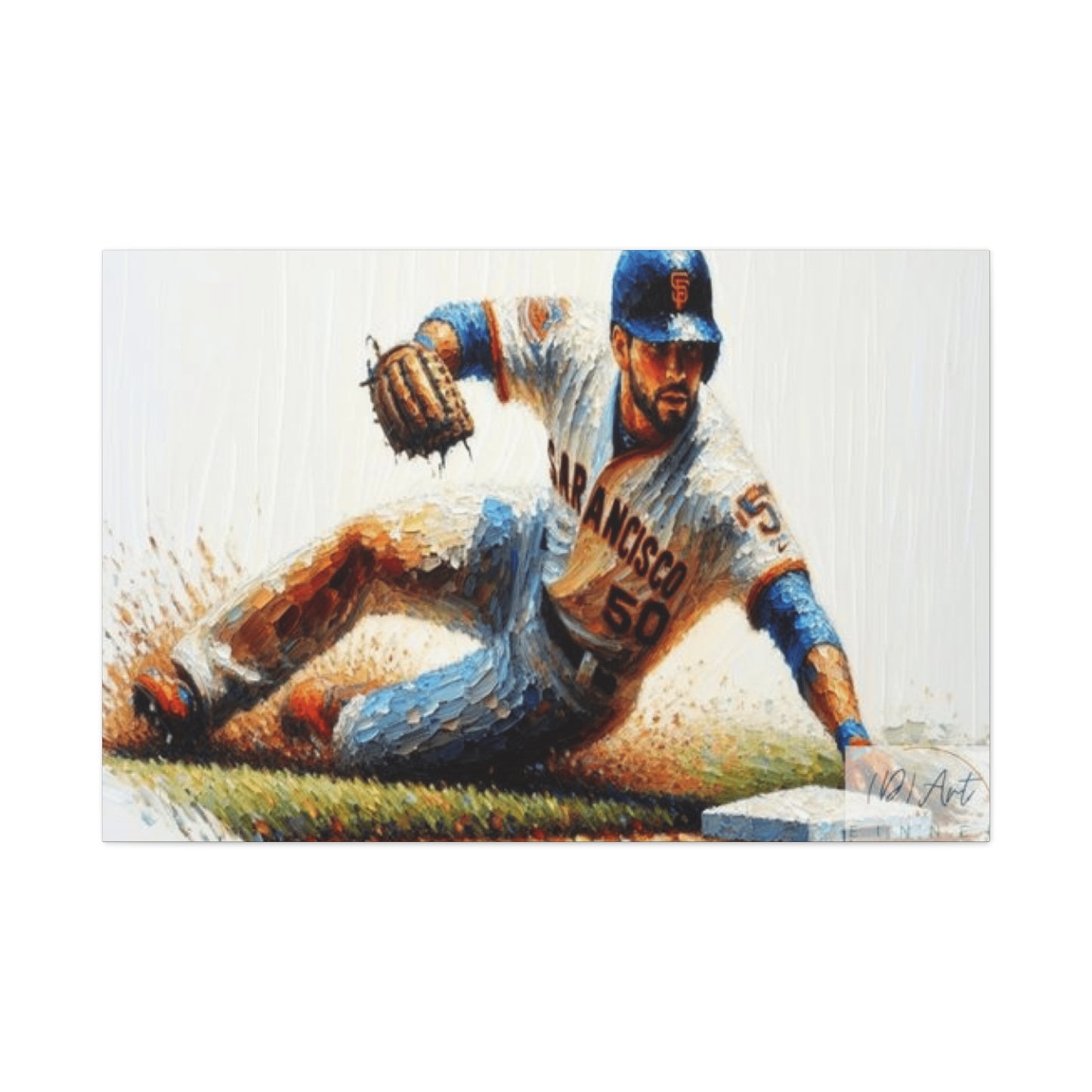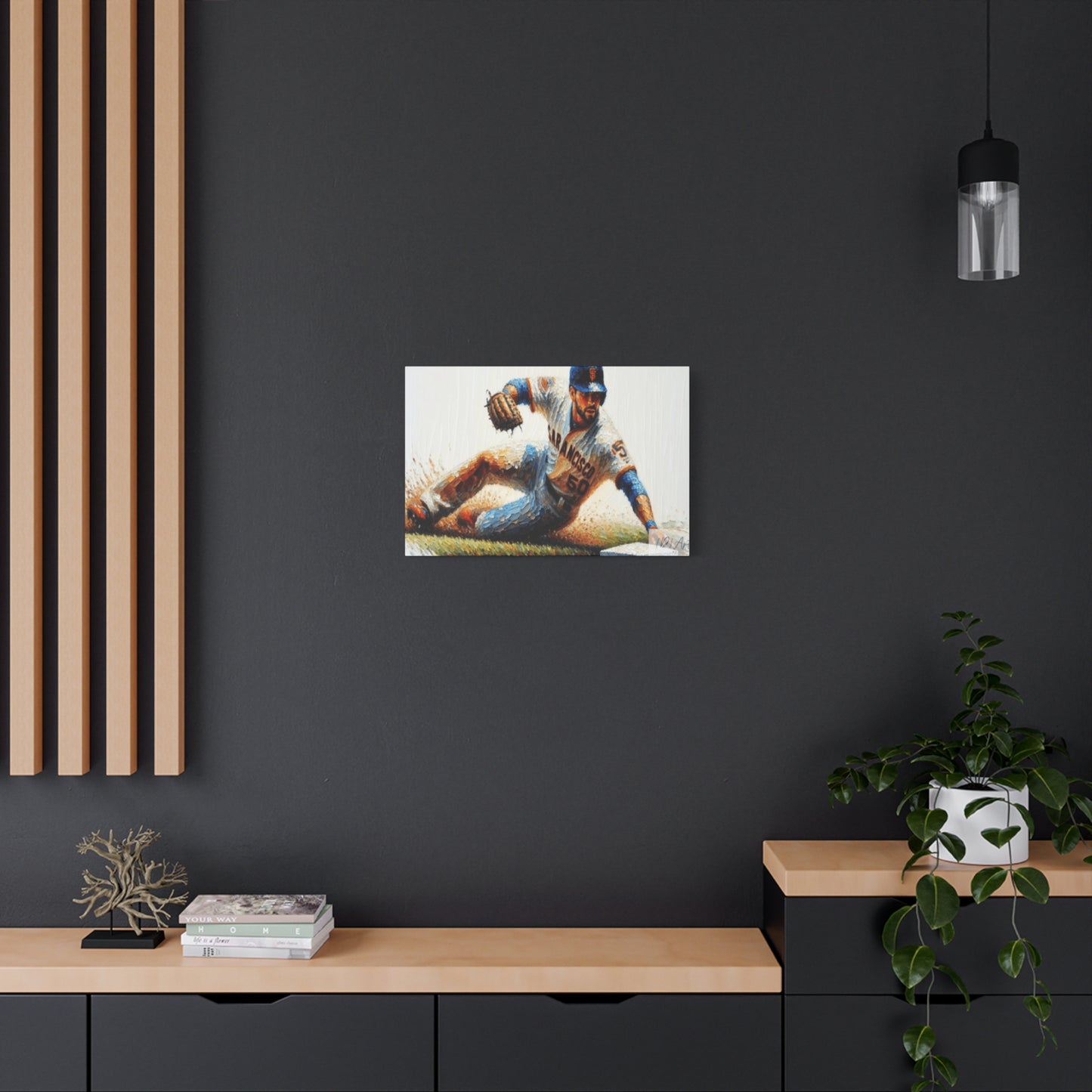Complete Guide to Baseball Fielder Wall Art: Transform Your Space with Diamond Dreams
Baseball has captivated hearts for generations, weaving itself into the fabric of American culture and beyond. The crack of the bat, the roar of the crowd, and the graceful athleticism of fielders making impossible catches have created countless memorable moments. Today, enthusiasts and collectors are bringing these magical moments into their homes through carefully curated displays that celebrate the beauty of America's pastime. Decorative pieces featuring athletes in action have become increasingly popular, offering fans a way to express their passion while adding sophisticated visual interest to any space.
Whether you're a devoted fan who never misses a game, a former player reminiscing about days on the diamond, or someone who appreciates the aesthetic beauty of sports photography and illustration, themed artwork can transform your living space into a personal shrine to the game you love. From vintage-inspired prints capturing the golden age of the sport to contemporary photographic masterpieces showcasing modern athleticism, the options available today offer something for every taste, budget, and interior design style.
This comprehensive exploration delves into every aspect of selecting, displaying, and appreciating decorative pieces that celebrate defensive players in action. We'll examine different artistic styles, materials, placement strategies, and how to create cohesive displays that honor both the sport's rich history and its dynamic present. Understanding the nuances of this specialized collecting niche will help you make informed decisions that enhance your space while celebrating your connection to the game.
Understanding the Appeal of Diamond Sport Decorative Displays
The connection between sports enthusiasts and visual representations of their favorite activities runs deep, rooted in nostalgia, admiration, and the desire to surround ourselves with imagery that inspires and motivates. Athletic-themed decorations serve multiple purposes beyond simple ornamentation, creating environments that reflect personal identity and values while sparking conversation and bringing energy to otherwise neutral spaces.
Defensive players, in particular, offer compelling visual subjects for artistic representation. The dynamic poses captured during diving catches, leaping grabs at the wall, and split-second reactions create dramatic compositions that translate beautifully to two-dimensional displays. These moments of athletic excellence frozen in time remind us of the dedication, skill, and physical prowess required to excel at the highest levels of competition.
Beyond the aesthetic appeal, these decorative pieces serve as daily reminders of perseverance, teamwork, and the pursuit of excellence. They can inspire young athletes training for their own success, provide comfort to longtime fans during off-season months, or simply bring joy through their artistic merit and emotional resonance. The psychological impact of surrounding ourselves with imagery that represents our passions and interests contributes to overall well-being and creates spaces where we feel genuinely comfortable and authentic.
The market for sports-themed decor has expanded dramatically in recent years, with artists, photographers, and designers recognizing the demand for sophisticated pieces that appeal to adult collectors rather than juvenile decorations. This evolution has elevated the genre, making it acceptable and even desirable to incorporate athletic imagery into well-designed interiors. Modern offerings range from museum-quality photographic prints to abstract interpretations that blend athletic themes with contemporary art movements, ensuring options exist for every aesthetic preference.
Exploring Various Artistic Styles and Mediums Available
The diversity of artistic approaches available today means collectors can find pieces that perfectly match their personal taste and the existing decor of their spaces. Understanding the characteristics of different styles helps in making selections that will provide lasting satisfaction and visual interest.
Photographic prints represent perhaps the most straightforward approach, capturing real moments of athletic achievement with stunning clarity and detail. High-quality sports photography requires exceptional timing, technical expertise, and often privileged access to positions that offer unique perspectives. The best examples feature dramatic lighting, perfect composition, and moments of peak action that convey the intensity and emotion of competition. These realistic representations appeal to those who value authenticity and connection to actual game moments.
Illustrated and graphic design approaches offer more stylistic flexibility, allowing artists to emphasize certain elements, simplify compositions, or add elements of fantasy and exaggeration. Vintage-style illustrations evoke the aesthetic of early twentieth-century sports programs and tobacco cards, creating nostalgic connections to the sport's heritage. Contemporary digital illustrations might incorporate bold colors, geometric shapes, or minimalist approaches that create striking visual statements suitable for modern interiors.
Traditional paintings, whether in oil, acrylic, or watercolor, bring the unique perspective and interpretation of individual artists to the subject matter. Impressionistic approaches might capture the energy and movement of athletic action through loose brushwork and vibrant color, while more realistic painting styles compete with photography in their detail and precision. Original paintings and limited-edition prints of paintings often become valuable collectibles, particularly when created by recognized sports artists.
Mixed media and assemblage pieces incorporate three-dimensional elements, combining various materials to create textured, layered works that add physical depth to displays. These might include actual equipment fragments, newspaper clippings, ticket stubs, or other memorabilia integrated into artistic compositions. Such pieces blur the line between pure decoration and memorabilia collecting, offering unique conversation pieces that tell stories beyond single images.
Abstract and contemporary interpretations push boundaries further, using athletic subjects as starting points for explorations of color, form, and composition that may barely resemble their source material. These sophisticated pieces appeal to collectors who appreciate fine art but want subjects that connect to their personal interests. They work particularly well in contemporary interiors where overtly representational sports imagery might seem out of place.
Selecting Appropriate Sizes for Different Room Configurations
Scale considerations play a crucial role in successfully integrating decorative pieces into existing spaces. Understanding how different sizes function in various room types ensures your selections enhance rather than overwhelm or get lost within their surroundings.
Large-scale pieces, typically measuring forty-eight inches or more in one dimension, make bold statements and work best as focal points in spacious rooms with ample wall space. These commanding displays draw immediate attention and can anchor entire design schemes. Living rooms, family rooms, finished basements, and large home offices often accommodate oversized pieces successfully, particularly on walls uninterrupted by windows, doors, or built-in features. When selecting large-scale options, consider viewing distances and ensure the full composition remains visible from typical seating or standing positions within the room.
Medium-sized pieces, generally ranging from twenty-four to forty-eight inches in their largest dimension, offer versatility for various applications. These proportions work well above furniture pieces like sofas and sideboards, in hallways, or as part of gallery wall arrangements. Medium formats provide enough visual presence to stand alone while remaining manageable enough to combine with other pieces in curated collections. Many collectors build their displays around several medium-sized pieces, creating cohesive narratives through careful selection and arrangement.
Smaller formats, under twenty-four inches, excel in intimate spaces, grouped arrangements, or locations where larger pieces would prove impractical. Bedrooms, bathrooms, staircases, and narrow hallways often benefit from smaller-scale decorations that provide visual interest without dominating limited space. Small pieces also work wonderfully in offices, studies, and personal workspaces, adding personality without creating distraction. Collections of smaller pieces arranged in grid patterns or organic groupings can create impressive overall displays that rival single large pieces in impact.
When determining appropriate sizes, measure your available wall space carefully and use painter's tape to outline potential placements before making purchases. This practical step helps visualize how different proportions will function in your specific environment. Remember to account for furniture placement, leaving appropriate margins around pieces rather than cramming them into every available inch of wall space. Professional designers typically recommend leaving at least six to twelve inches of blank wall space around standalone pieces to allow them to breathe visually.
Consider ceiling heights when selecting vertical pieces. Rooms with eight-foot ceilings generally look best with pieces that don't exceed forty inches in height, while spaces with higher ceilings can accommodate taller formats that draw the eye upward and emphasize architectural grandeur. Horizontal pieces often work better in rooms with standard ceiling heights, creating width without overwhelming vertical proportions.
Color Palette Considerations for Interior Design Harmony
Successful integration of athletic-themed decorations requires attention to color relationships between new pieces and existing decor elements. Understanding basic color theory principles helps ensure additions enhance rather than clash with established room palettes.
Monochromatic schemes, featuring primarily black and white imagery, offer the greatest flexibility for integration into existing spaces. These classic color combinations work with virtually any decor style, from ultra-modern minimalism to traditional elegance. Black and white photography, in particular, brings sophistication and timelessness, avoiding the potential for color dates as trends evolve. The neutral quality allows these pieces to fade into backgrounds when desired or stand out through strong compositional elements rather than chromatic intensity.
Earth-tone palettes featuring browns, greens, and warm neutrals complement rooms designed around natural materials like wood furniture, leather upholstery, and stone or brick architectural features. Vintage-style pieces often incorporate these warmer color ranges, creating harmonious relationships with traditional and rustic interiors. The connection between outdoor sports and natural color palettes creates intuitive aesthetic logic that feels comfortable and appropriate.
Bold, saturated color schemes make dramatic statements in contemporary spaces designed around strong chromatic elements. Pieces featuring vibrant blues, reds, or greens can either match existing accent colors, creating cohesive relationships, or provide intentional contrast that energizes neutral backgrounds. When introducing bold colors through decorative pieces, consider whether you want them to blend with or pop against surrounding elements, adjusting your selections accordingly.
Team-specific color schemes appeal to devoted fans who want to express loyalty through their decor choices. Official team colors create immediate recognition and connection for fellow enthusiasts while potentially limiting flexibility if you decide to redecorate or shift team allegiances. Consider whether permanent commitment to specific color schemes aligns with your long-term design goals. Some collectors address this by creating dedicated fan spaces where team colors dominate while keeping other areas of their homes more neutrally styled.
Seasonal considerations might influence color choices, particularly in spaces used for entertaining. Lighter, brighter palettes feel appropriate for spring and summer months, while deeper, richer tones complement autumn and winter atmospheres. If you enjoy refreshing your decor seasonally, consider investing in multiple pieces you can rotate throughout the year, keeping displays feeling current and dynamic.
Before finalizing color-related decisions, examine potential pieces in your actual space if possible, or at minimum, view digital images on various devices and in different lighting conditions. Colors appear dramatically different depending on ambient lighting, time of day, and surrounding elements. What looks perfect on a computer screen might clash unexpectedly with your living room walls or compete with existing furniture colors.
Framing Options That Enhance Visual Presentation
The frames surrounding your selected pieces significantly impact their overall appearance and how successfully they integrate into your interior design scheme. Understanding various framing options helps you make choices that protect and enhance your investments.
Traditional wood frames remain popular for their warmth, versatility, and classic appeal. The natural material complements virtually any decor style, with finish options ranging from light natural woods to deep espresso stains. Wider frames create bold statements appropriate for larger pieces and traditional settings, while narrower profiles suit contemporary aesthetics and smaller formats. The grain patterns and organic irregularities of wood add subtle visual interest without competing with the artwork itself.
Metal frames bring modern sensibility and clean lines particularly suited to contemporary and industrial interiors. Aluminum, steel, and other metal options typically feature powder-coated finishes in various colors, with black, silver, and bronze being most common. The sleek, precise appearance of metal frames complements photographic prints especially well, enhancing their crisp, detailed nature. Thin metal profiles create floating effects that emphasize artwork while minimizing frame presence.
Float mounting techniques suspend prints slightly away from backing materials, creating shadow gaps that add dimensional interest and contemporary sophistication. This approach works particularly well with pieces that shouldn't be pressed against backing or those where you want to showcase the paper or canvas edges. Float mounting typically requires deeper frames to accommodate the spatial gap, resulting in more substantial overall presentations.
Canvas stretching and gallery wrapping eliminate traditional frames entirely, wrapping printed images around wooden stretcher bars so artwork continues around edges. This frameless approach creates casual, contemporary presentations particularly popular for photographic and digitally created pieces. Gallery-wrapped canvases can hang directly on walls without additional framing, simplifying installation while creating clean, modern appearances. The technique works especially well for larger pieces where traditional framing becomes prohibitively expensive.
Matting, the border material between artwork and frame, serves both aesthetic and preservation functions. Archival-quality mats prevent prints from touching glass or acrylic, protecting them from moisture damage and chemical reactions. Aesthetically, mats create visual breathing room, preventing frames from crowding compositions while adding formal polish. Mat colors dramatically affect overall appearance, with white and off-white being most common but colored mats offering opportunities for creative coordination with room palettes or image elements.
Custom versus ready-made framing presents cost and quality tradeoffs. Professional custom framing allows for precise specification of every element and ensures proper techniques for valuable or delicate pieces. However, costs can quickly escalate, particularly for larger formats. Ready-made frames offer budget-friendly alternatives for standard sizes, with quality varying widely between manufacturers. Many collectors compromise by using ready-made solutions for less valuable pieces while investing in custom framing for favorite or particularly significant works.
Consider protective glazing carefully, choosing between regular glass, non-glare glass, acrylic, or UV-protective options. Regular glass costs least but creates reflections that can obscure imagery in brightly lit rooms. Non-glare treatments reduce reflections but can soften image details. Acrylic weighs less than glass, making it safer for large pieces and installations in high-traffic areas, but scratches more easily. UV-protective options, whether glass or acrylic, help prevent fading over time, justifying their higher cost for valuable pieces displayed in sun-exposed locations.
Strategic Placement Within Various Room Types
Where you position decorative pieces significantly impacts both their visibility and effectiveness in enhancing your spaces. Understanding the unique characteristics and functions of different rooms helps optimize placement decisions.
Living rooms and family rooms, being primary gathering spaces, offer excellent opportunities for substantial displays that make immediate impressions on visitors while providing enjoyment during daily use. Position pieces at eye level when seated, typically with center points fifty-seven to sixty inches from the floor, adjusting based on your furniture heights and typical viewing positions. Above-sofa placement represents the most common configuration, with pieces typically spanning half to two-thirds of furniture width to create balanced proportions. Avoid placing pieces where they compete with televisions or other focal points, instead choosing walls that draw attention when entering rooms or provide visual interest from primary seating areas.
Home offices and studies benefit from motivational imagery that inspires productivity while reflecting personal interests. Positioning pieces directly in your sight line from your desk provides regular visual breaks and emotional boosts during work sessions. Alternatively, placing displays on walls behind seating areas creates impressive backdrops during video calls, subtly communicating your interests and personality to colleagues and clients. Ensure adequate lighting to properly showcase pieces without creating glare on your computer monitors or excessive eye strain.
Bedrooms allow for more personal, intimate selections that reflect individual tastes without requiring consideration of broader household preferences. Above-bed placement represents the traditional choice, creating focal points that ground room designs. However, pieces positioned opposite beds provide views to enjoy while relaxing or preparing for sleep. Keep bedroom displays somewhat subdued and calming rather than overly energetic to maintain restful atmospheres conducive to sleep.
Hallways and corridors, often overlooked in decorating schemes, provide excellent opportunities for gallery-style installations that transform transitional spaces into personal museums. Linear arrangements guide movement through homes while displaying multiple pieces that might compete if positioned in single rooms. Consistent framing creates cohesive appearances, while varying sizes add visual interest. Adequate lighting is crucial in hallways, which often lack natural light sources.
Finished basements and recreation rooms, frequently designed as entertainment and relaxation zones, naturally accommodate sports-themed decorations that might seem too casual for formal living spaces. These areas often feature comfortable seating arranged for television viewing, with ample wall space for substantial displays. Consider creating comprehensive installations that combine artwork with actual memorabilia, pennants, equipment, and other collected items for immersive thematic environments.
Bathrooms might seem unusual locations for valuable displays, but powder rooms and guest bathrooms offer surprisingly effective spaces for smaller pieces that create conversational focal points. Moisture concerns require appropriate framing and careful positioning away from direct water exposure, but properly protected pieces withstand typical bathroom humidity. The intimate scale of bathrooms allows smaller formats to provide substantial impact impossible in larger rooms.
Staircases present unique opportunities and challenges, with walls ascending or descending alongside steps providing extended display areas. Arrange multiple pieces to follow staircase angles, creating dynamic installations that transform purely functional spaces. Ensure adequate lighting to prevent shadows and allow clear viewing from various positions on stairs. Consider sight lines carefully, as pieces viewed while climbing may appear different than when descending.
Outdoor living spaces like covered patios, screened porches, and three-season rooms expand your display options into exterior zones. Weather-resistant materials and protective framing extend artwork's lifespan in these transitional environments. The casual nature of outdoor spaces makes them perfect for relaxed, playful displays that might seem too informal for interior rooms.
Creating Cohesive Gallery Wall Arrangements
Curated collections of multiple pieces arranged together create visual impact exceeding the sum of individual components. Mastering gallery wall composition transforms random assemblages into sophisticated displays that rival professional installations.
Theme-based collections focusing on specific aspects create unified narratives within diverse arrangements. You might concentrate on particular defensive positions, famous players, specific teams, or memorable moments. Alternatively, formal themes based on color palettes, artistic styles, or photographic techniques create cohesion through aesthetic rather than subject connections. Clearly defined themes help guide acquisition decisions and create focused collections that tell coherent stories.
Symmetrical arrangements appeal to those preferring order and balance, with pieces positioned in regular grids or mirror-image configurations. This traditional approach suits formal spaces and creates calm, organized impressions. Measure carefully and use templates to ensure precise spacing, as even minor irregularities become obvious in symmetrical layouts. Grid arrangements with consistent spacing between pieces of identical or similar sizes create particularly clean, museum-like presentations.
Asymmetrical salon-style arrangements offer more organic, collected-over-time appearances with pieces of various sizes arranged in apparently casual but actually carefully considered configurations. This approach better accommodates additions to growing collections, as gaps can accept new pieces without disrupting overall balance. Begin asymmetrical arrangements by positioning the largest or most important piece first, then building around it with smaller elements. Maintain consistent spacing between pieces to prevent chaotic appearances, typically using two to four inches between frames as a standard.
Horizontal arrangements emphasize width, guiding eyes along walls and making spaces appear broader. This orientation suits areas above lengthy furniture pieces like sofas, sideboards, or beds. Limit height to prevent installations from appearing top-heavy or disproportionate to supporting furniture. Single-row arrangements create clean, contemporary impressions, while double-row configurations add visual interest without excessive complexity.
Vertical arrangements draw eyes upward, emphasizing ceiling height and creating impressions of grandeur in spaces with vertical proportions. Staircase walls, narrow wall sections between doorways or windows, and rooms with particularly high ceilings benefit from vertical gallery installations. Anchor these arrangements with larger pieces at bottom positions, adding smaller elements above to create stable visual weight distribution.
Template-based planning prevents installation regrets. Create full-size paper templates of each piece and arrange them on floors or temporarily attach them to walls with low-tack painter's tape. This experimental phase allows infinite rearrangement without creating unnecessary holes in walls. Stand back regularly to evaluate overall balance, adjusting positions until compositions feel right. Document final arrangements with photographs before removing templates, providing guides during actual installation.
Lighting integration elevates gallery walls from simple displays to dramatic presentations. Track lighting, picture lights, or strategically positioned accent lights highlight individual pieces while creating depth through shadows and highlights. Even consistent ambient lighting improves visibility and appreciation compared to underlit installations that waste decorative potential.
Flexibility considerations matter for evolving collections. Use hanging systems that allow easy height adjustments and piece substitutions rather than permanent installation methods that require wall repairs when making changes. Rail systems, museum-style cables, or grid-based arrangements facilitate ongoing curation as your collection and tastes evolve.
Incorporating Vintage and Retro Design Elements
Historical pieces and reproductions celebrating earlier eras in the sport offer unique aesthetic qualities and nostalgic connections that differentiate collections from contemporary-focused displays. Understanding vintage styles helps you source and incorporate these special pieces effectively.
Golden age imagery from the early to mid-twentieth century captures the sport during formative decades when it solidified its position as America's pastime. The distinctive visual characteristics of this era including grainy black and white photography, limited color palettes in early color images, and romantic idealization of players as heroes create powerful nostalgic resonance. Authentic vintage pieces from this period have become valuable collectibles, while quality reproductions make these aesthetics accessible to modern collectors at various price points.
Mid-century modern interpretations from the nineteen-fifties and sixties feature bold colors, simplified shapes, and graphic design sensibilities that align with broader mid-century aesthetic movements. These stylized representations often sacrifice realism for visual impact, using flat color fields, simplified anatomy, and dynamic compositions that emphasize movement and energy. This design language remains remarkably contemporary, allowing vintage-era pieces to integrate seamlessly into modern interiors.
Vintage advertising and promotional materials, originally created for commercial rather than artistic purposes, offer fascinating glimpses into sports marketing history. Old program covers, poster art, and promotional illustrations combine period graphic design with sports subjects, creating pieces that appeal to both design enthusiasts and sports collectors. Reproductions of historic advertisements and promotional materials are widely available, often printed on treated papers or canvases that replicate aged appearances.
Retro typography and lettering styles immediately communicate vintage aesthetics through font choices and text layouts reminiscent of earlier eras. Hand-lettered appearances, bold sans-serif fonts, and script styles popular in various decades create period-specific impressions. Modern pieces incorporating vintage typography blend contemporary and historical elements, creating bridge styles that honor tradition while maintaining relevance.
Deliberate aging techniques applied to modern reproductions simulate authentic vintage wear through artificial distressing, sepia toning, and treatments that replicate decades of exposure. These manufactured patinas allow collectors to achieve vintage aesthetics without the expense and fragility of genuine antique pieces. Quality varies significantly in artificially aged reproductions, with the best examples capturing authentic wear patterns while avoiding excessive or unrealistic distressing.
Color palette limitations characteristic of vintage printing processes create distinctive appearances modern reproductions often emulate. Spot-color printing, duotones, and limited color ranges born from technical constraints rather than aesthetic choices nevertheless created recognizable period styles. Understanding these historical printing limitations helps you appreciate why certain color combinations appear repeatedly in vintage sports imagery.
Authentication considerations become important when collecting genuinely vintage pieces rather than reproductions. Learn to recognize period-appropriate printing techniques, paper types, and production methods that distinguish authentic vintage items from modern fakes. Reputable dealers provide provenance documentation and authenticity guarantees, protecting investments in valuable historical pieces. For most decorative purposes, however, high-quality reproductions provide visual impact and period styling without requiring authentication expertise or significant financial investment.
Modern and Contemporary Artistic Interpretations
Current artists and designers continue pushing creative boundaries in sports-themed artwork, producing fresh perspectives that appeal to collectors seeking contemporary sophistication rather than traditional representational styles.
Minimalist approaches strip away extraneous detail, reducing subjects to essential forms, lines, and colors. These simplified compositions create bold graphic statements that work particularly well in modern interiors where busy, detailed imagery might feel overwhelming. Single-color silhouettes, line drawings, and geometric abstractions of athletic poses create sophisticated decorative pieces that reference sports without dominating through literal representation.
Photorealistic digital art and manipulated photography blur lines between documentation and creation, using technology to enhance, combine, or transform source images into heightened versions of reality. These contemporary techniques can create impossibly perfect moments, combined exposures showing movement progression, or fantastical scenes that celebrate sports in conceptual rather than literal terms. The technical sophistication of modern digital art produces museum-quality pieces comparable to traditional fine art photography.
Abstract expressionist interpretations use athletic subjects as starting points for explorations of color, gesture, and emotion that may barely reference recognizable forms. Energetic brushwork, dramatic color combinations, and compositional dynamism capture the feeling and movement of sports without literal representation. These sophisticated pieces appeal to fine art collectors who want connections to personal interests while maintaining artistic credibility.
Pop art influences bring bold colors, strong contrasts, and graphic sensibilities to sports subjects, echoing the movement's elevation of popular culture to fine art status. Contemporary pop-inspired pieces often incorporate text elements, repeated imagery, and commercial art techniques that create vibrant, energetic displays. The accessible, unpretentious nature of pop art makes it particularly appropriate for casual spaces where overly serious fine art might seem pretentious.
Mixed media innovations combining traditional and digital techniques, various materials, or incorporating three-dimensional elements expand definitions of sports artwork beyond two-dimensional images on walls. Pieces incorporating actual equipment fragments, layered printing techniques, or sculptural components create unique decorative objects that transcend simple pictures. These innovative approaches appeal to collectors seeking truly distinctive pieces that stand apart from mass-produced prints.
Street art and urban art influences bring graffiti aesthetics, wheat-paste poster styling, and underground art movements into sports-themed creations. This contemporary edge appeals to younger collectors and those wanting rebellious, non-traditional approaches to sports decoration. The raw energy and deliberate rough finishes of street art-inspired pieces create dramatic contrasts with polished, conventional sports photography.
Geometric and mathematical pattern integration creates optical interest through repeated shapes, tessellations, or mathematical constructions that build recognizable forms from abstract components. These intellectually engaging pieces reward close examination while functioning as bold graphic elements from distance. The intersection of mathematical precision and athletic subject matter appeals to analytical minds who appreciate both sports and design theory.
Cultural fusion approaches combine sports imagery with artistic traditions from various global cultures, creating unique hybrid pieces. Japanese woodblock printing techniques applied to contemporary athletes, Mexican folk art styling, or African textile pattern integration demonstrate how traditional artistic languages can refresh familiar subjects. These culturally informed pieces add sophistication and global awareness to collections.
Material Choices and Their Impact on Appearance
The physical materials used in producing decorative pieces significantly affect their appearance, longevity, and appropriate applications. Understanding material characteristics helps you select options suited to your specific needs and preferences.
Paper prints remain the most traditional and widely available option, with quality varying dramatically based on paper weight, texture, and composition. Heavy art papers in weights of ninety pounds or more provide substantial feel and resist warping better than lightweight alternatives. Textured papers including watercolor, cold-press, and fine art papers add physical dimension that enhances certain artistic styles, while smooth papers suit photographic reproductions requiring fine detail preservation. Archival, acid-free papers prevent yellowing and deterioration over time, protecting long-term investments. Understanding paper types helps you evaluate quality and appropriateness for specific pieces.
Canvas prints bring texture and casual sophistication, with the woven material adding physical dimension that distinguishes them from flat paper prints. Modern canvas printing technologies produce remarkably detailed reproductions that maintain vibrancy while adding the tactile quality associated with traditional paintings. Canvas stretched over wooden frames creates substantial, three-dimensional objects rather than flat images, adding presence that makes them feel more like original art than simple prints. The material's flexibility and lighter weight compared to framed glass-covered prints simplifies installation and reduces concerns about falling hazards in active households.
Metal prints represent relatively recent innovations, with images dye-sublimated directly onto specially treated aluminum panels. The results offer incredible color vibrancy, remarkable durability, and contemporary industrial aesthetics. The reflective quality of metal surfaces creates luminous appearances with colors that seem to glow from within. These virtually indestructible pieces withstand moisture, never fade, and clean easily, making them suitable for challenging locations including humid bathrooms or even protected outdoor areas. The higher cost of metal printing technology produces premium pieces for collectors valuing cutting-edge presentation methods.
Acrylic prints feature images mounted behind clear acrylic panels, creating depth and glossy, gallery-quality presentations. The transparent acrylic layer adds physical dimension while protecting underlying images. Colors appear saturated and vibrant, with the material enhancing rather than merely protecting prints. The contemporary, high-end appearance of acrylic prints suits modern interiors particularly well, creating conversation-piece displays that showcase both the imagery and mounting technique. Like metal prints, acrylic options command premium prices justified by their distinctive appearances and impressive presentations.
Wood prints transfer images directly onto prepared wood panels, allowing natural grain and color to show through or interact with imagery. This rustic approach creates unique pieces where the organic character of wood becomes part of the artistic composition. Each wood print appears slightly different due to natural variations in grain patterns, ensuring truly one-of-a-kind pieces. The casual, handcrafted quality suits farmhouse, rustic, and natural-themed interiors while adding warmth often missing in more polished presentation methods.
Fabric and textile options including tapestries, quilts, and printed fabrics offer soft, tactile alternatives to rigid mounting materials. These flexible pieces can drape, gather, or hang in ways impossible with hard surfaces, creating different visual effects. The textile approach particularly suits casual spaces and adds acoustic benefits through sound absorption, unlike reflective hard surfaces that can contribute to echoes in sparsely furnished rooms. However, fabric pieces require more delicate care and cleaning compared to durable alternatives.
Glass prints similar to acrylic presentations mount images on or behind glass panels rather than acrylic. The material choice affects appearance subtly, with glass offering slightly different optical properties and perhaps feeling more traditional than modern acrylic alternatives. Glass prints maintain sharpness and clarity while adding dimensional depth, though they weigh considerably more than acrylic equivalents and require more careful handling due to breakage concerns.
Photographic paper versus standard printing creates significant quality differences in photographic reproductions. True photographic prints using traditional chemical processes on specialized photographic papers produce archival quality, professional results with superior longevity and color accuracy compared to standard inkjet prints. While more expensive, photographic papers justify their cost for serious collectors prioritizing quality and longevity over budget considerations.
Lighting Techniques That Showcase Your Displays
Proper illumination dramatically enhances decorative presentations, revealing details, enriching colors, and creating focal points that draw attention. Understanding lighting principles helps you maximize the visual impact of your collections.
Picture lights mounted directly on frames or walls immediately above pieces provide focused illumination specifically designed for artwork displays. These specialized fixtures typically feature elongated shapes that evenly distribute light across horizontal surfaces, preventing hot spots or dark corners. Traditional picture lights using incandescent bulbs create warm, golden light that enhances vintage pieces but may color-shift contemporary photographs. LED picture lights offer energy efficiency and cooler operation while providing color-accurate white light that preserves original color intentions. Wireless battery-operated options simplify installation without requiring electrical modifications.
Track lighting systems provide flexible solutions allowing multiple adjustable fixtures to illuminate various pieces from ceiling-mounted rails. This approach works particularly well for gallery walls where several pieces require individual lighting. Adjustable heads let you precisely direct light to each piece while allowing easy modifications as collections evolve. Modern LED track systems minimize energy consumption while producing minimal heat that could damage sensitive materials over time.
Recessed ceiling lights, while primarily providing ambient illumination, can highlight displays when strategically positioned and properly directed. Adjustable eyeball-style recessed fixtures offer some directional control, allowing you to emphasize important pieces within overall lighting schemes. However, relying exclusively on recessed lighting may produce insufficient illumination for proper artwork appreciation unless fixtures are numerous and well-positioned.
Natural light provides beautiful, ever-changing illumination that many find most pleasing for displaying artwork. However, direct sunlight poses serious risks to pieces susceptible to fading, particularly photographs, works on paper, and colored prints. UV-filtering window films and shades help protect valuable pieces while allowing natural light to illuminate rooms. Position sun-sensitive pieces on walls perpendicular to windows rather than directly opposite them, reducing direct exposure while maintaining ambient natural light. Consider sunlight patterns at different times of day and year when positioning valuable pieces requiring protection.
Accent lighting using adjustable floor or table lamps offers flexible solutions requiring no installation modifications. Position these movable light sources to wash walls from below or side angles, creating dramatic effects impossible with overhead lighting. Accent lights work particularly well for highlighting individual pieces in rooms with multiple focal points requiring independent emphasis. The ability to relocate accent lights as needs change makes them valuable components in evolving decorating schemes.
Ambient lighting from multiple sources creates even, shadow-free illumination that reveals entire compositions without dramatic highlights or dark areas. This approach suits spaces where artwork serves as complementary decor rather than dominant focal points, or where numerous pieces displayed together benefit from consistent visibility. Combining ambient lighting with accent lighting creates layered schemes offering both overall visibility and dramatic emphasis.
Color temperature considerations significantly impact how displays appear under artificial lighting. Warm white bulbs around 2700-3000 Kelvin create cozy, intimate atmospheres that enhance vintage pieces and traditional interiors but may yellow whites and cool colors. Cool white bulbs around 4000-5000 Kelvin provide neutral white light that accurately represents colors as intended while creating more clinical, contemporary impressions. Choose color temperatures that complement both your artwork and broader room design intentions, maintaining consistency within individual spaces to avoid disjointed lighting impressions.
Dimmers allow lighting intensity adjustments matching different activities, times of day, and moods. Bright illumination showcases details during active periods while reduced lighting creates ambiance during relaxation. Install dimmer controls on lighting circuits serving your displays to maximize flexibility. Ensure dimmer switches are compatible with your bulb types, as some LED bulbs require specific dimmer models to function properly.
Smart lighting systems enable precise control over color temperature, intensity, and even color tint through smartphone apps or voice commands. These advanced systems allow you to create custom lighting scenes emphasizing different pieces at different times, or adjusting lighting to complement changing artwork displays. While representing significant investments, smart lighting provides unprecedented control for serious collectors willing to invest in optimized presentation environments.
Conclusion:
Baseball, often referred to as America's pastime, is a sport steeped in tradition, passion, and excitement. It captures moments of athleticism, teamwork, and perseverance, all of which are embodied in the imagery of a baseball fielder in action. Whether it’s a dramatic dive to catch a fly ball, a perfect throw to home plate, or the poised stance of a player ready to make a play, these moments are nothing short of cinematic. Baseball fielder wall art is an excellent way to celebrate and immortalize these exhilarating moments, allowing fans to bring the energy of the diamond into their homes.
The beauty of baseball fielder art lies in its ability to encapsulate the spirit of the game. A well-executed piece of artwork captures the emotion, intensity, and focus of a player, frozen in time as they work to turn a game-changing play. For baseball lovers, these images are a direct connection to the sport they cherish. The visual power of a fielder’s athletic grace, whether they’re leaping to make a catch or sliding into the dirt to tag a runner out, can inspire both players and fans alike.
One of the standout features of baseball fielder wall art is its ability to evoke nostalgia and excitement. For fans, these pieces act as a reminder of the game’s timeless nature. Whether you grew up playing the sport, attending games with family, or watching a favorite team on TV, baseball has a way of forming lasting memories. When displayed in a living room, man cave, or office, baseball fielder wall art can immediately spark conversation, foster connections, and deepen the emotional ties to the sport. It transforms your space into a place where those fond memories and moments of triumph are always within reach.
Beyond its nostalgic value, baseball fielder wall art has a versatility that allows it to complement various home décor styles. From modern, minimalist interiors to vintage-themed rooms, sports enthusiasts can find artwork that matches their aesthetic. Action-packed illustrations, retro-style prints, and even abstract representations of a fielder’s movement can seamlessly integrate into different spaces. For example, a sleek, black-and-white photographic print of a fielder in mid-flight can add a touch of sophistication to a contemporary living room, while a colorful painting of a baseball diamond in full action can add energy and warmth to a game room or sports bar.
Another unique benefit of fielder-themed art is its ability to foster a sense of teamwork and unity. The fielder, while an individual athlete, is also part of a larger team effort. These pieces of art can serve as a tribute not only to the player but to the sport’s emphasis on collaboration and community. For families or groups of friends who love the game, a baseball fielder wall art piece can represent the values of cooperation, dedication, and shared joy that come from playing or watching baseball together.
The symbolism inherent in baseball fielder art goes beyond just the visual excitement. The fielder represents the heart and soul of the game—dedication, focus, and the willingness to go all out for the win. Whether it’s catching a fly ball in the outfield or making a critical double play, these moments are about commitment and precision. By bringing a fielder's image into your home, you're not just decorating a wall; you're bringing in a reminder of the grit, determination, and beauty that defines the game itself.
For those looking for a deeper emotional connection with their art, customizing a piece of baseball fielder wall art can further personalize the experience. Imagine a painting or print featuring your favorite player, team, or a memorable moment from a game you attended. Such personalized artwork can transform your living space into a shrine to your love for baseball, enhancing your connection to the sport and making it even more meaningful.
In addition to the emotional and aesthetic benefits, baseball fielder wall art also serves as a celebration of athleticism and the human spirit. The physical feats demonstrated by a baseball fielder—the speed, agility, and precision—are a testament to the dedication and training that goes into mastering the sport. By displaying a fielder’s art in your home, you honor these remarkable qualities and celebrate the beauty of the sport as a whole.
In conclusion, baseball fielder wall art offers more than just a stylish decoration for your home; it brings the energy, emotion, and passion of the sport into your everyday life. Whether you’re a lifelong fan, a casual observer, or a former player, fielder-themed artwork can evoke cherished memories and inspire a deeper appreciation for the game. With its ability to blend with various interior designs and connect fans to the essence of baseball, this type of art serves as a timeless tribute to the sport's vibrant history and future.











